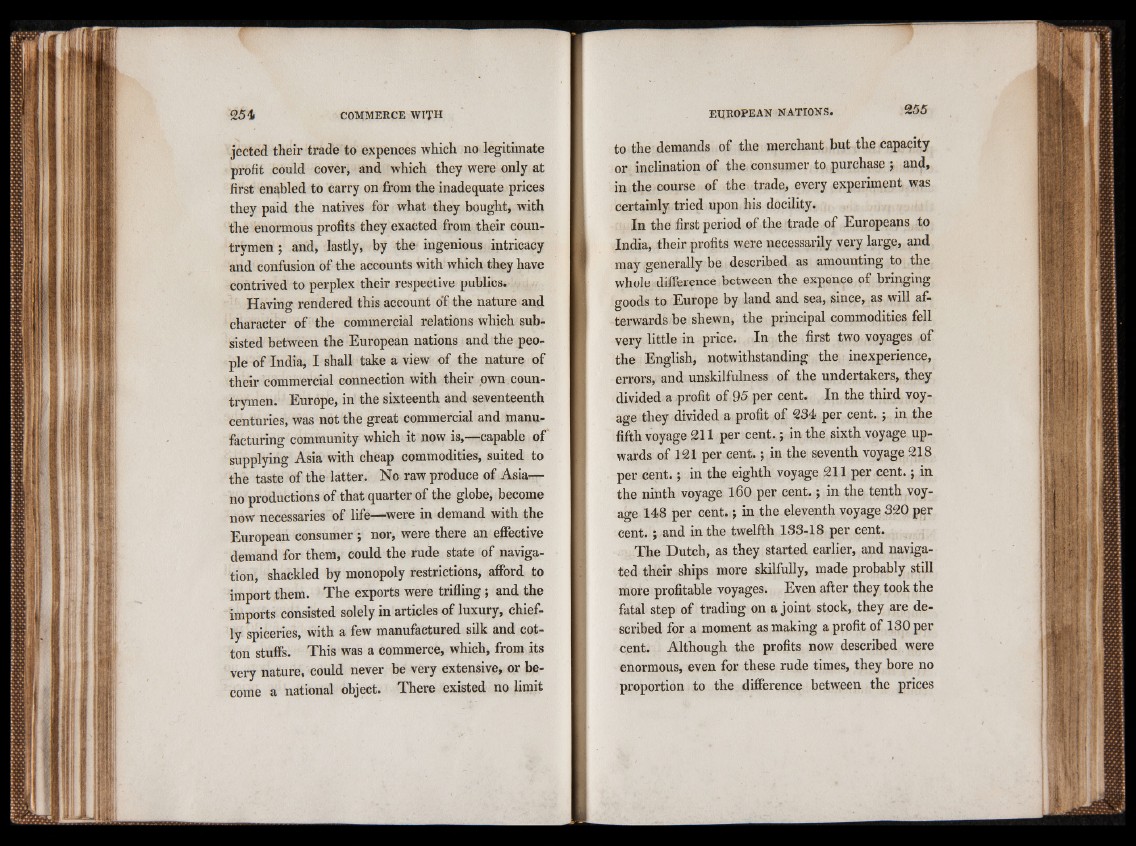
jected their trade to expences which no legitimate
profit could cover, and which they were only at
first enabled to carry on from the inadequate prices
they paid the natives for what they bought, with
the enormous profits they exacted from their countrymen
; and, lastly, by the ingenious intricacy
and confusion of the accounts with which they have
contrived to perplex their respective publics.
Having rendered this account o'f the nature and
character of the commercial relations which subsisted
between the European nations and the people
of India, I shall take a view of the nature of
their commercial connection with their own . countrymen.
Europe, in the sixteenth and seventeenth
centuries, was not the great commercial and manufacturing
community which it now is,—capable of
supplying Asia with cheap commodities, suited to
the taste of the latter. No raw produce of Asia—
no productions of that quarter of the globe, become
now necessaries of life—were in demand with the
European consumer ; nor, were there an effective
demand for them, could the rude state of navigation,
shackled by monopoly restrictions, afford to
import them. The exports were trifling; and the
imports consisted solely in articles of luxury, chiefly
spiceries, with a few manufactured silk and cotton
stuffs. This was a commerce, which, from its
very nature, could never be very extensive, or become
a national object. There existed no limit
to the demands of the merchant but the capacity
or inclination of the consumer to purchase ; and,
in the course of the trade, every experiment was
certainly tried upon his docility.
In the first period of the trade of Europeans to
India, their profits were necessarily very large, and
may generally be described as amounting to the
whole difference between the expence of bringing
goods to Europe by land and sea, since, as will afterwards
be shewn, the principal commodities fell
very little in price. In the first two voyages of
the English, notwithstanding the inexperience,
errors, and unskilfulness of the undertakers, they
divided a profit of 95 per cent. In the third voyage
they divided a profit of 234 per cent, j in the
fifth voyage 211 per cent.; in the sixth voyage upwards
of 121 per cent.; in the seventh voyage 218
per cent, j in the eighth voyage 211 per cent, j in
the ninth voyage 160 per cent.; in the tenth voyage
148 per cent.; in the eleventh voyage 320 per
cent.; and in the twelfth 133-18 per cent.
The Dutch, as they started earlier, and navigated
their ships more skilfully, made probably still
more profitable voyages. Even after they took the
fatal step of trading on a joint stock, they are described
for a moment as making a profit of 130 per
cent. Although the profits now described were
enormous, even for these rude times, they bore no
proportion to the difference between the prices